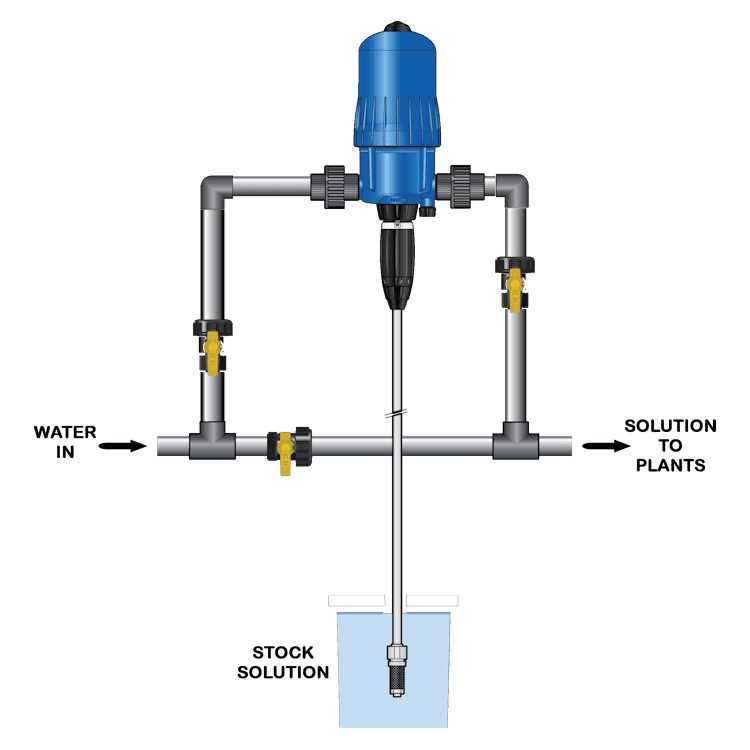Supporting hobby-, institutional-, and commercial growers with quality products and solid scientific information since 1994.
[To avoid losses and damage over the Holiday rush, we have suspended shipping until January 5th.]

[To avoid losses and damage over the Holiday rush, we have suspended shipping until January 5th.]

If you are like many orchid growers, your collection will grow and grow, reaching a point where manually mixing fertilizer and pesticide solutions becomes a hassle. This article will provide some guidance about selecting and using a metering pump to reduce the labor.
HOW THEY WORK: The most common type of fertilizer injector pump is a water-driven motor that draws the concentrated fertilizer solution from a tank and injects it into the water flow.

Because they work on a volumetric ratio – so-much injected per so-much flow – the diluted mixture is reliably uniform, no matter what the water pressure of flow rate, as long as they are within the device’s specifications.
CHOOSING A PUMP: There are three technical factors to consider when choosing a pump: flow rate, water pressure, and mixing ratio. We’ll address those individually.
OPERATION: After connecting the incoming water line and your delivery hose to the pump, you simply drop the pump feed tube into your stock solution tank, and away you go! Well, not quite, as you need to know the final product concentration you wish to deliver to your plants and the mixing ratio of the pump so you can make up the proper stock (concentrate) solution.
When employing a continuous feeding regimen, that is, having fertilizer in all irrigation water, I use K-Lite at 25 ppm N. That solution requires 0.73 grams of granular fertilizer per gallon. If my metering pump is set at a 1% (1:100) ratio, my stock tank concentrate must contain 100 x 0.73 = 73 grams of granular material in each gallon. If I had the pump set for 1 ounce per gallon (1:128), then that stock tank would require 128 x 0.73 = 93g/gallon. You may find our Fertilizer Concentrate Calculator to be a help with that.
You may be tempted to go with a more extreme ratio to minimize the need to refill the stock tank – 1 tablespoon/gal (1:256) or 1 teaspoon/gal (1:768) – but keep in mind that fertilizer powders have solubility limits, and those containing calcium and magnesium tend to be far more chemically stable (i.e., no precipitation) the more dilute they are. Generally, a dilution rate of 1:150 to 1:100 is recommended for fertilizers, recognizing that the greater to volume consumed per pump stoke, the more frequently you’ll need to refill the stock tank.
WHAT ABOUT ADDITIVES? Earlier I mentioned the flexibility of variable-ratio injector pumps. It’s certainly possible to have the pump set to one ounce per gallon (1:128) for fertilizer, then reset it to one tablespoon per gallon (1:256) for applying a an additive like Kelpak. From a practical perspective, I found it easier to leave the pump setting alone, and instead of adding the Kelpak to the stock tank, I simply attach a hose-end sprayer to my irrigation line and fill up the sprayer tank with the additive(s) of choice, ending up with a blend applied to the plants. When using an insecticide, I bypassed the injector, and still used the hose-end sprayer. (I have no specific knowledge that insecticides are incompatible with fertilizers, that was just a personal preference.)
If you go with a variable-ratio device, for mechanical reliability, when you settle on a mixing ratio, the pump should be chosen with that ratio in the middle third of their range.